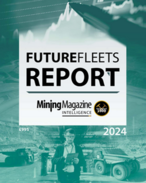At a time when investment in mining projects is at its lowest ebb for years, is it wise to pull on a strike? Even sight-impaired Edward would see it was a foolish step to take, yet that was exactly what the Australian Metal Workers Union threatened to do last week.
Welders, boilermakers and construction workers employed by Monadelphous and Laing O’Rourke at Cape Lambert want more family-friendly rosters.
They want to move from a four weeks on, one week off roster to a three weeks on, one week off arrangement.
Rio Tinto employees have not been involved in the roster negotiations.
Given BHP Billiton recently announced it would be cutting jobs in its iron ore division, any threat of strike action does seem a little foolish.
It makes it an easier decision to trim workers if the changes they propose are going to push down productivity.
And it is the workers who will lose their jobs – not the union officials.
Those workers at Cape Lambert should take note because it was there that the mining unions were handed a defeat so serious they are only just starting to come back into the Pilbara.
Cape Lambert is tied to the Robe River operation, which was once a place so heavily involved with union disputation that it gave Western Australia its Wild West tag.
Back in the 1970s and ’80s the unions demanded and had put in place 284 restrictive work practices.
When Peko Wallsend put Charles Copeman in charge of the Robe River operation in 1986 it was the world’s fourth largest iron ore producer – but unprofitable.
His first act was to give notice that those 284 restrictive work practices, which were in addition to the site agreement governing conditions on the site, would cease.
Industrial disputes raged but when the dust settled productivity at Robe had trebled and there were a lot fewer workers than there had been before Copeman arrived.
It also effectively broke the union hold on iron ore mining in WA.
This is something for the unions and their members to note.
At least in the case of the recent Cape Lambert dispute the workers agreed they would give up some of their wage in return for the roster changes because they would be spending less time at work.
That has not been the case for maritime workers in the oil and gas sector.
They want both a pay rise and a more favourable roster and they are prepared to strike if they don’t get it.
Unlike the onshore construction workers at Cape Lambert, the maritime workers only work six months of the year.
They are on a five weeks on, five weeks off roster at the moment and want to change it to four on, four off.
That will add to the costs for the 22 companies that are providing maritime services to the oil and gas sector.
This in turns adds to the costs of building projects in the oil and gas space, which means Australia may not live up to its hydrocarbon potential.
A recent report by the International Energy Agency on China’s demand for energy shows Australia is in the box seat to absolutely clean up in the medium term.
However, the recent experience in the LNG space shows that the cost of building such projects here is starting to get too high.
Therefore, oil and gas companies will start looking elsewhere.
At the moment Canada is setting itself up to reap the benefit, with the proponents of four LNG projects in British Columbia banding together to jointly work through issues such as labour relations.
The maritime wages and conditions battle is being fought over the enterprise bargaining agreement for marine contractor Tidewater and has been running for more than 18 months.
The latest in that dispute is that a 24-hour strike has been called for Monday.
If industry groups such as the Australian Mines and Metals Association are right, this sort of disputation can only lead to the end of oil and gas construction projects in Australia.
It is the rank and file union members that will suffer. The union officials will still keep drawing their healthy salaries – paid by union members’ dues – and look for the next opportunity.
When senior officials flit from union to union seeking a better job, there is the issue of loyalty to the cause.
Maybe this is the norm these days but it appears, in such cases, that the only cause is their own career, with the cushy Labor party seat and the accrued superannuation benefits that likely come with it.
Perhaps it is fitting that the union movement needs some officials in place with some more professional training but there was a lot to be said for those who had come up from the shop floor and understood the issues from that perspective.
Ironically, Copeman told me back in 2010 that he did not believe those sort of union excesses would return because Australians would not accept them.
It is true workers are not downing tools because the canteen served the same flavour of ice cream two days in a row or because the fireworks at the staff picnic weren’t up to scratch but there are worrying signs.
























